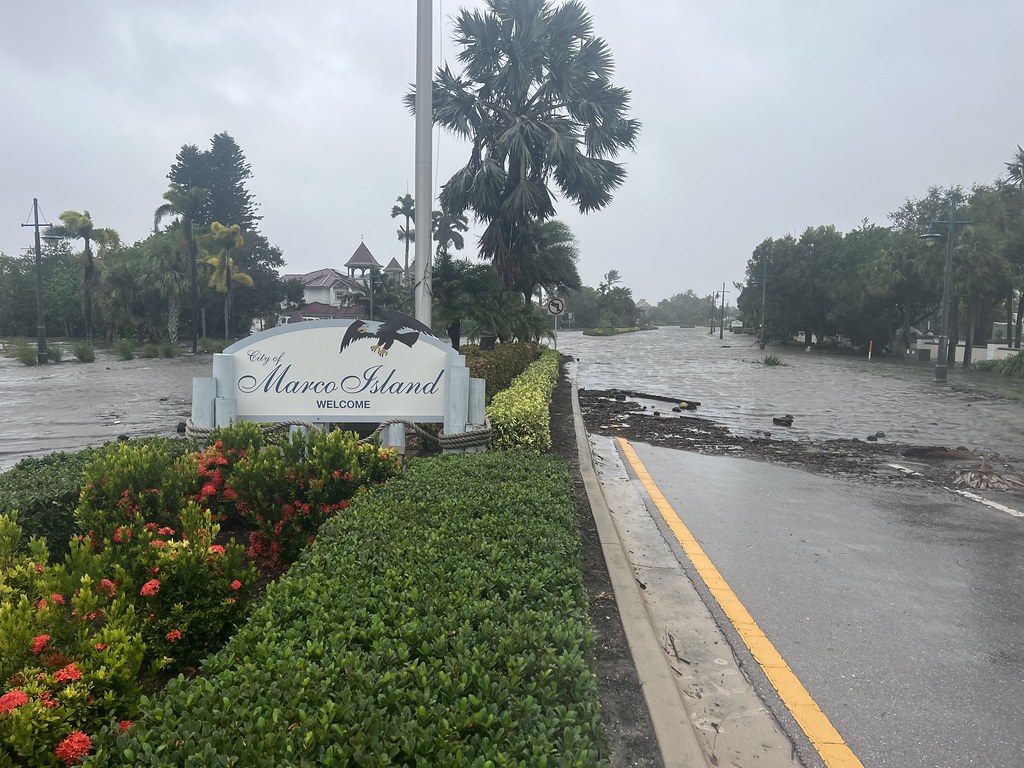North America hurricanes impact students and their families

As Hurricane Ian pummeled through Florida Wednesday afternoon, residents across the state were already enduring the storm’s destruction: large-scale power outages plunged over two million residents into darkness, winds reached 150 mph and halted transportation and tourism with the cancellation of over 2,000 flights and seaport shutdowns. Hurricane Ian is marked as one of the strongest storms to strike Florida, prompting alarm from students affected by Ian, as well as those affected by Hurricane Fiona, which recently hit Puerto Rico following Hurricane Maria which hit the same region five years before.
Thalia Colón García, a senior majoring in acting for stage, screen and new media, is one of many Puerto Rican students living away from home while Hurricane Fiona struck the island.
“It was difficult to get in contact with my family because the whole island lost signal,” Colón García said. “About two days passed by when I finally got in contact with my mom.”
The disaster that struck Puerto Rico last week is reminiscent of Hurricane Maria, which slammed the island in September 2017. The death toll reached 2,975 with damages reaching $90 billion. Some households were without power for a whole year.
Colón García was with her family when Hurricane Maria hit Puerto Rico and remembers the devastation it caused, leaving the island in a still-delicate state.
“We’re still dealing with the consequences of Hurricane Maria,” Colón García said. “Even though Fiona wasn’t as strong as Maria, we’re not as strong to deal with more hurricanes because we are still trying to recover from Maria.”
Colón García believes that climate change is playing a role in the types of hurricanes that are making more and more appearances. She explained that Puerto Rico’s very hot climate and warm waters are factors that contribute to an increasing number of hurricanes.
“Those conditions are particularly required and are essential for all these natural disasters to occur,” Colón García said.
Last week, Hurricane Fiona began as a Category-1 storm ripping through Puerto Rico, causing intense flooding and affecting hundreds of thousands of residents. A power outage hit the entire island leaving nearly 3.3 million residents without access to power. As a result, around 746,000 homes and businesses have been without power for over a week since the hurricane passed through. Authorities in Puerto Rico also revealed that 25 people have lost their lives.
Only days later, Hurricane Fiona traveled up the coast and ravaged Canada’s eastern seaboard. Hundreds of thousands of residents in Nova Scotia, Prince Edward Island, Quebec, Newfoundland and New Brunswick were affected. Although the storm was considered a post-tropical cyclone by the time it made landfall on the coastal provinces of Canada, Fiona retained its hurricane-speed winds. The flooding that resulted has left many without power. Two people from the affected provinces have died and one person remains missing.
Hurricane Fiona created effects stretching further than just the eastern coastline and Caribbean islands.
Diego Delgado, a sophomore majoring in architecture, personally experienced how Hurricane Maria affected his community and believes that the changing climate is having an effect on hurricane patterns.
“Hurricane Maria went from a tropical storm to a Category-3 in a day which was really sudden,” Delgado said. “Because waters are getting a lot warmer, hurricanes are getting a lot more fuel and are moving slower which can cause a lot more flooding and prolonged wind.”
As Hurricane Ian made landfall in Florida with Category-4 strength, there is unease about the increasingly cataclysmic effects of hurricanes. Noah MacDonald, a junior majoring in English and theater, recalls how Hurricane Andrew and Hurricane Irma devastated Florida in the past.
“As climate change is drastically affecting our world, it seems like it’s not a coincidence,” MacDonald said.
He also predicts that contacting people back home might prove to be difficult.
“I don’t know if I’ll even have signal to call my parents because in the past, the cell phone towers have been out of order,” MacDonald said. “It causes a lot of worry and disruptions in our day to day life.”
He commented on how, when storms hit, particular areas are more prone to destruction than others.
“In my childhood, I have lived in South Florida, near mobile home communities. These mobile homes are often built before all of the safety regulations for hurricanes,” MacDonald said. “They’re made out of poor material that can’t withstand the destruction of the winds.”
MacDonald said that certain regions face amplified consequences each hurricane season.
“Every hurricane always causes so many problems for the islands, specifically Puerto Rico,” MacDonald said. “It seems like they’re always out of luck. When a hurricane comes, then the next one comes and they never seem able to catch up.”
Delgado explained that receiving supplies and aid after the hurricanes has always been a challenge in Puerto Rico. However, despite the barriers, he emphasizes the perseverance of the people.
“These are the people who go forward,” Delgado said. “We are usually the ones that clean up and help each other rebuild the island.”
MacDonald highlighted the importance of community and the way people provide support in the aftermath of these natural disasters.
“I have seen firsthand how our communities help each other. When people are needing a place to stay, there’s always family and friends,” he said. “We are still trying to help each other and come together during the times that tragedy hits.”

